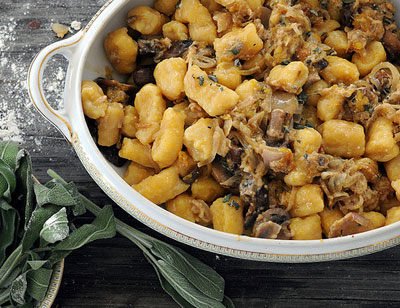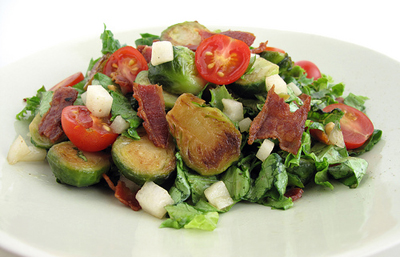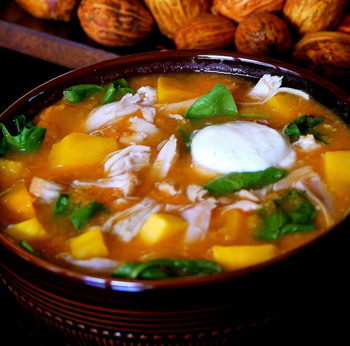 In our house, "Gnocchi" means "I love you".
In our house, "Gnocchi" means "I love you".
The time invovled in making the pillowy mixture is minimal, but it is the act of cutting each strip to just the right width...chopping bite sized dumplings and then rolling each one delicately across the ridges of a fork - those repetative moves of delicious intent translates so purely to my husband as he savours one gnocchi at a time.
I have made several verisons of Gnocchi, using potatoes and even squash. Though in keeping with the season of pumpkins and fall delight, I am pleased with this version. The sage and shallots carry a certain melody throughout the dish that can only be thought of as fall.
For a vegetarian, this is the perfect Thanksgiving meal.

 Eat your vegetables! Mom's famous words. Just like everyone else, I too hated many vegetables when I was a kid. Brussels sprouts were at the top of my list with peas not far behind. It was many years later that I realized I couldn't figure out why I hated sprouts. I had never even tasted them, but I was told by other kids that the taste and smell was revolting. But what's the point of hating a food if you haven't even tried it? When I finally did try Brussels sprouts for the first time, I was completely taken aback at how good they were. I was converted and from that point on I think I became the adventurous eater I am today. That's what a little sprout can do to a person.
Eat your vegetables! Mom's famous words. Just like everyone else, I too hated many vegetables when I was a kid. Brussels sprouts were at the top of my list with peas not far behind. It was many years later that I realized I couldn't figure out why I hated sprouts. I had never even tasted them, but I was told by other kids that the taste and smell was revolting. But what's the point of hating a food if you haven't even tried it? When I finally did try Brussels sprouts for the first time, I was completely taken aback at how good they were. I was converted and from that point on I think I became the adventurous eater I am today. That's what a little sprout can do to a person. Last week I got a shipment of SweeTango apples to try. New varieties of apples appear up now and again and the SweeTango is a relatively new one that's harvested the end of August and beginning of September. It's a very pretty apple with a bright mix of golden green and bright red.
Last week I got a shipment of SweeTango apples to try. New varieties of apples appear up now and again and the SweeTango is a relatively new one that's harvested the end of August and beginning of September. It's a very pretty apple with a bright mix of golden green and bright red. It is a little known fact that I can speak Japanese. True, I only know two words, but I say them well.
It is a little known fact that I can speak Japanese. True, I only know two words, but I say them well.